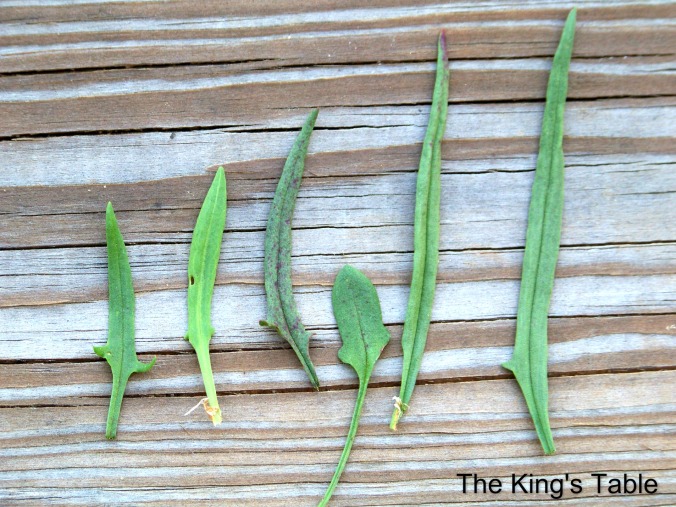I was weeding a garden bed this morning and found new sprouts of sheep sorrel. It’s tasty, so I considered leaving it, but it can also be invasive. My desire for spring vegetables won, so the sorrel was pulled. But no worries, it’ll pop up somewhere else.
Sheep sorrel is a great weed to know. With easily recognized leaves that taste similar to lemons, they’re often the first wild edible that people learn.

Sheep Sorrel was originally the common name for Rumex acetosella, but nowadays, it may also refer to Rumex hastatulus. With similar shaped leaves, the two are often confused. Other common names are Sour Grass or Sour Dock. Rumex hastatulus is also called Heartwing Sorrel. Both have edible sour leaves, so the photos of this post may be of either variety.
Both types have pointy-tipped leaves with a pair of lobes pointing outward from the leaf base. The leaves are hairless and typically have long petioles. They are shimmery when viewed in the sun, as if someone sprinkled fine glitter on top. The leaf shapes have been compared to arrowheads, swords, and sheep heads – hence the name Sheep Sorrel. The narrow part of the leaf is the head, and the lobes are the ears. The size and shape of the leaves will vary greatly based on growing conditions.
The photo below is of new leaves, which grow in a basal rosette close to the ground. They emerge in the cool weather of early spring or fall. The presence and distinction of the lobes may vary on young leaves, but they often become more pronounced as the plant ages.

Smaller, narrower leaves grow along the stem of the plant. Stem leaves grow alternate of each other, and often don’t have as defined of lobes on the sides (shown below).

The tiny flowers on the stalk turn shades of red as they mature. If you’re driving along and see a field speckled with red, it may be sheep sorrel, like in the photo below.

The flowering stems are ridged and often tinted red. Most sites say sheep sorrel flowers from March to November, but this will vary by location. I’m in zone 7 with summers up to 100 degrees F, and the plants die back in the mid-summer heat. I normally see flowers in late spring and mid to late fall.

Both Rumex acetosella and Rumex hastatulus are typically grown as perennials. R. acetosella is native to Eurasia and the British Isles but is now common through much of the US. Its roots are more mat growing, and the flowering stems rarely get above 18 inches high. R. hastatulus is native to North America. It has a taproot and grows 2 feet tall or more. R. hastatulus has winged seeds (hence the name Heartwing Sorrel) while R. acetosella does not.
The leaves can be eaten raw or cooked. Over consumption (massive amounts) can cause abdominal cramping, stomach pain, or diarrhea. If your doctor has put you on a low oxalate diet, consumption of sheep sorrel is not recommended. When cooking sorrel, cast iron or aluminum cookware is not recommended, as the metal can cause a metallic taste by interacting with the oxalic acid of the leaves.

The roots can be dried, and then made into a tea or powder. Supposedly, this powder can be used to make noodles, but I haven’t found anyone who has tried this yet. The seeds are also edible, but they are too tiny to do much with.
So why consume sheep sorrel leaves? Mainly because they taste good (if you like sour things), but they also have many purported health benefits.
What is it good for?
Sheep sorrel contains vitamin C, vitamin A, calcium, potassium, magnesium, phosphorus, and a small amount of zinc. It is also an excellent antioxidant and contains compounds that may be effective against bacteria, viral infections, and intestinal worms.
Traditionally, the leaves have been used for inflammation, as a diuretic, and for help moving food through the digestive tract. A tea made from sorrel roots has been used to improve diarrhea and excessive menstrual bleeding. However, few scientific studies have been done to see if the plant is as effective as herbal practitioners have claimed over the years.
Rumex acetosella is a main ingredient in the cancer-fighting Essiac tea. The best decoctions use 25% of the root and 75% aerial parts, but products with the root are uncommon. The leaves can be harvested multiple times, but digging up the root kills the plant. It’s not profitable for farmers to harvest the roots, and the varieties that use the root are expensive because of this. (To buy with sorrel root, here’s the Regular Essiac Tea and the Extended Essiac Formula.)
How can you use the leaves?
I have a few suggestions:
1. Toss a few raw leaves in a salad or smoothie
2. Steep the leaves in a tea
3. Make Sorrel Sauce for Seafood or Cooked Vegetables from Mother Earth News
4. Use recipes that call for garden sorrel or other sorrels, such as this Sorrel Soup from Leda Merideth
Have you tried sheep sorrel? Do you eat other wild edibles or weeds?

Reblogged this on Witch's Sanctum and commented:
Just harvested some Sheep’s Sorrel from my neighbor’s and my own yards yesterday! The neighbor already thinks I’m crazy, so why not give them substantiating evidence? LMAO
LikeLike